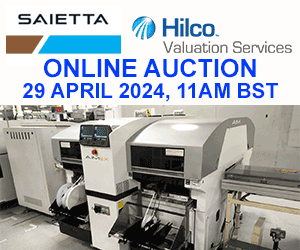EMSNOW Analyst Insights: Dale Ford, Chief Analyst, Electronic Components Industry Association (ECIA) Part 2
ECIA’s Chief Analyst Dale Ford recently appeared on a member webinar to report on ECIA’s mid-year forecast for the component industry. EMSNOW caught up with him for a follow up interview based on his insightful analysis. This is Part Two of his excellent article. Part One can be found here>>
EMSNOW: How will the rollout of 5G impact the availability of components. If these technologies are as disruptive as they are predicted to be, will the component suppliers be ahead of the demand curve for the right components to avoid shortages?

EMSNOW: Which end markets do you see as driving the most volatility in component availability?
In the past we often talked about a “killer application” that drove a new wave of demand for electronics components. The next growth phase will not be driven by a single application or even a handful of applications. The driving technology forces will penetrate a wide range of markets and products. This is what will help drive the volume demand that will stimulate much stronger growth as compared to markets that demand on only one or a few product categories. As a result, the next cycle will likely drive stronger volatility across a broader range of product categories. However, memory ICs will likely be one of the most volatile segments even in this new environment.
EMSNOW: What kind of component pricing trends do you see for the next up cycle?
The relationship between pricing and supply chain balance will continue into the future as prices go up in the face of demand outpacing supply and visa-versa. The key element that may add to increased prices in the future is the dramatic change in the trade environment over the past year. Tariffs and limitations on where companies can source products will likely increase upward pricing pressure. As the pool of potential suppliers is constrained and the flexibility of supply relationships is reduced it will add to the normal price pressures and tariffs. The electronics industry has been one of the greatest beneficiaries of the “free trade” environment that has prevailed for many years. The change in trading relationships across the world will likely have a more negative influence on the global electronics industry.
EMSNOW: Anything else to say to EMS community?
I think I have probably already said too much. But I encourage everyone to go to the ECIA Executive Conference October 20-22 in Chicago as we will be discussing these and other important issues impacting the component supply chain.











